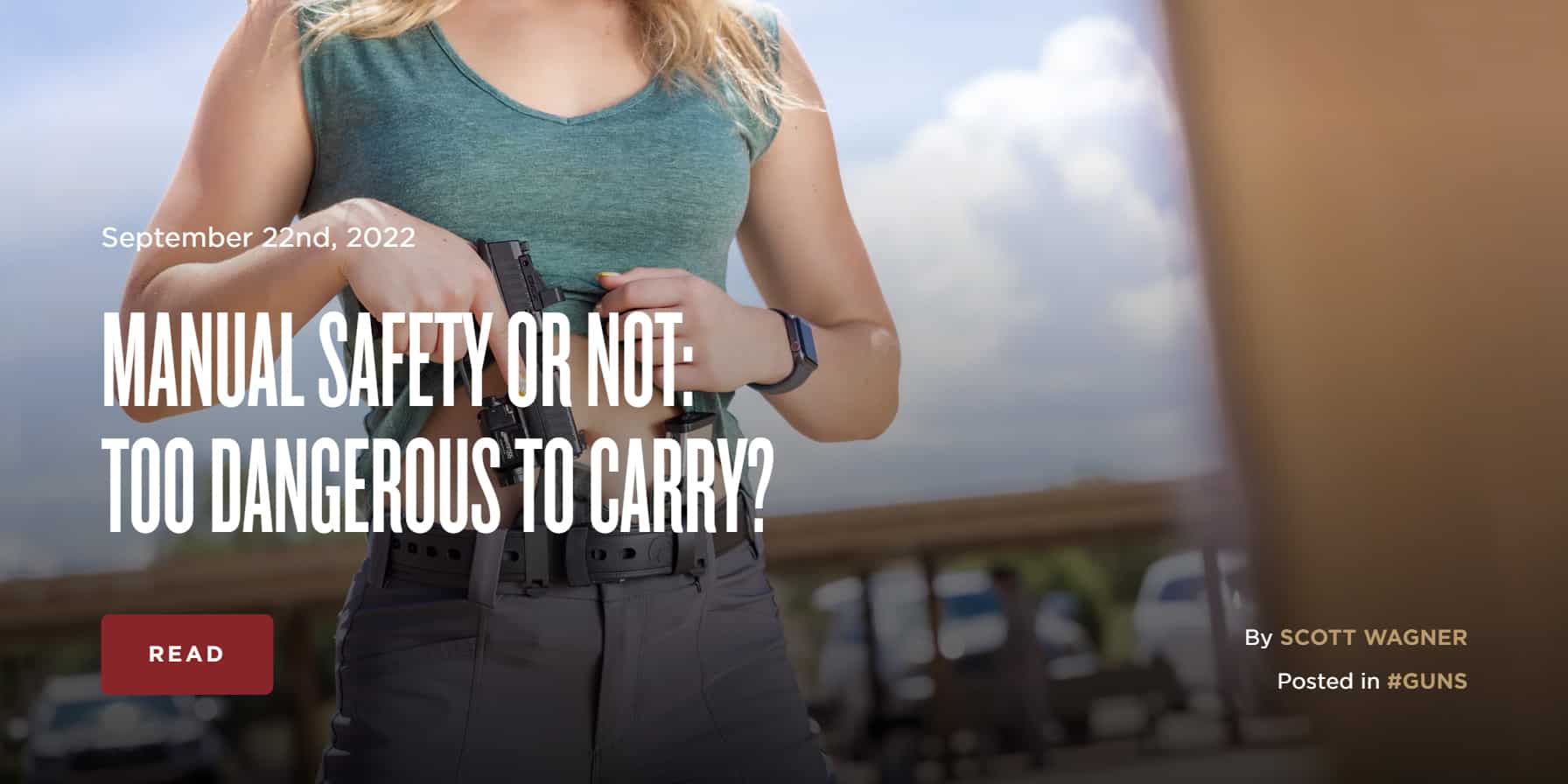I have only carried 1911s for my whole CCW life (about 30 years now).
But, I listened to a podcast by Mike Glover (of Fieldcraft Survival) a few months ago and it has certainly gotten me to at least considering changing my EDC to a single action striker-fired pistol with no safety (other than the blade in the trigger).
I think there is no disputing the fact that any and every manual safety on a pistol is a POTENTIAL impediment to firing the weapon when you want to. I mean, that's what they are for - preventing you from firing the weapon.
If you're in an urgent, high-stress situation, WILL you always be able to get a good enough grip to reliably disengage a grip safety? Will you remember to, and be able to EXPEDITIOUSLY, click off a thumb safety? What if you're having to operate the pistol with only your weak (usually, left) hand?
Mike made a pretty good case for why law enforcement or military might need or be required to carry pistols with more safety features than a private citizen carrying solely for self-defense. So, what they do is not necessarily what is best for the rest of us.
If you are that private citizen, carrying for self-defense, the concept of carrying a pistol that will GUARANTEED (well, as guaranteed as anything in life can be) go off when you pull the trigger is pretty appealing. No chance of it not going off because you didn't click off the thumb safety (whether you forgot, or you missed, or you're shooting lefty and it's only on the "wrong" side). No chance of it not going off because you didn't get a "proper" grip.
It is the same appeal as carrying a revolver, but with a nice, light trigger and many more rounds on tap - all in a less bulky package.
For the moment, I am still carrying only 1911s. But, I have been shooting them for 30 years, I practice with them, and I shoots USPSA, IDPA, and SCSA matches with them. I nevertheless recognize I could forget to sweep the safety, not be able to reach it, or get a bad grip and have made a conscious decision to live with that risk, as I consider it very low (for me). At least for now. But, I may yet change my EDC to something striker-fired....
ps. I DO believe that the risk of a Glock-style trigger getting caught on a shirt, and causing an AD, when holstering into a concealed carry holster is real. The risk is low, but I think it is real enough to merit being VERY careful with that.

